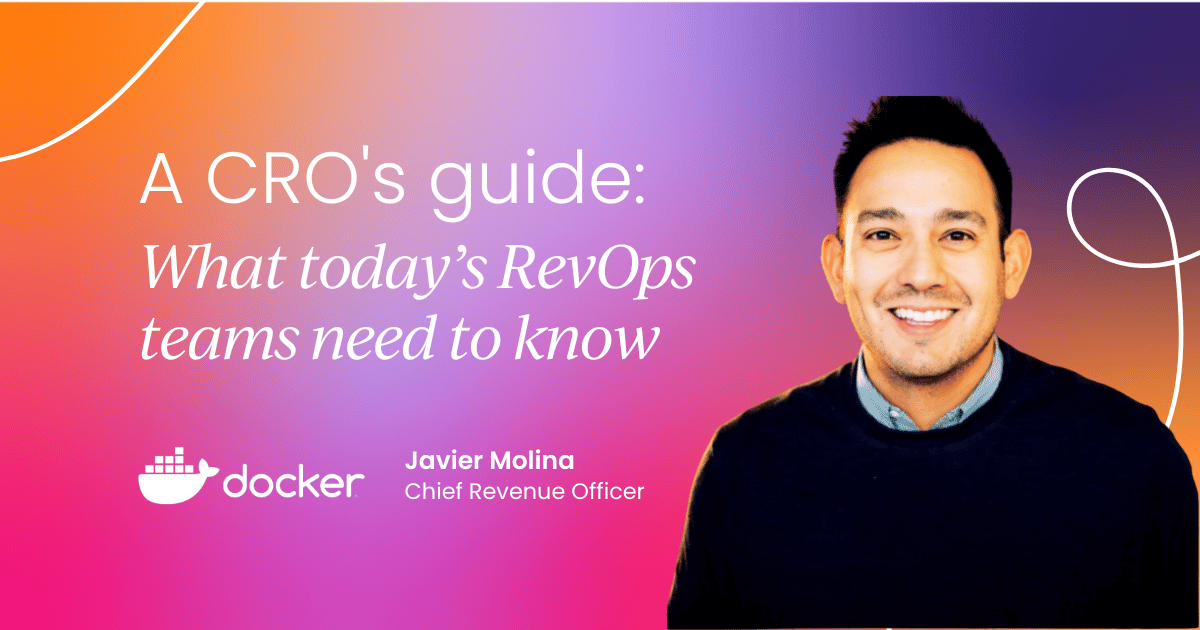This article comes from Lawrence Lanzilli’s insightful talk at our New York 2024 Chief Revenue Officer Summit. Check out his full presentation and our wealth of OnDemand resources.
Have you ever wondered why some companies seem to attract investors effortlessly while others struggle to secure capital? As a Chief Revenue Officer (CRO) and someone with a background in investment banking, I’ve come to see exactly what separates the two.
Today, investors are looking to CROs not just to drive revenue but to create scalable, compelling growth strategies that can turn a good business into a great investment.
In my journey from building and selling companies to working with investment banks, I’ve learned that the CRO has a unique role in bridging the operational and financial sides of a business. We’re not just here to manage sales, we’re here to make sure the company’s growth story is something investors want to buy into.
So, let’s dive into how we, as CROs, can use our position to drive capital success and ensure our companies thrive in the current competitive investment landscape.
The evolving role of the CRO
As CROs, we’re often expected to be entrepreneurial, own equity, and drive growth like we’re building the company ourselves. Many people think that responsibility lies mostly with the CEO, but in my experience, it’s the CRO’s perspective on revenue generation that’s critical for attracting capital.
When an investor looks at a company, they’re increasingly looking to the CRO for reassurance that their capital will be used effectively to grow the business. They want a capital strategy that doesn’t just sound good on paper but is closely aligned with our go-to-market (GTM) plans.
It’s about showing that we’re capable of scaling revenue and that the operational structure is in place to make it happen.
Now, more than ever, investors are looking for CROs who see beyond the immediate sales numbers. They want CROs who think about long-term growth, market fit, and even the potential for exits.
So, if you’re a CRO, you need to be ready to play that role—showing investors you’re just as invested in the company’s future as they are.

Why investment banks care about the CRO’s plan
One of the key insights I’ve gained from my time in investment banking is how crucial it is for CROs to present a solid, scalable business model.
Here’s something that might surprise you: when a company hires an investment bank, the bank’s primary loyalty isn’t actually to the company—it’s to the investors. Their job is to protect investors, not necessarily to raise funds for you, and they do this by rigorously vetting every company they represent.
From an investment bank’s perspective, if they’re going to bring a company to their investor networks, they need to feel confident that this company is a sound investment. This is where the CRO becomes a major player.
After they speak with the CEO, investors are looking to talk to the CRO about capital strategy. If the CRO’s plan doesn’t line up with the GTM strategy, that’s a red flag, and they’re out. No amount of marketing will change that.
This vetting process highlights something critical: the strength of the CRO’s plan. If we can’t speak confidently about how we’ll use that capital, how we’ll scale, and how we’ll bring value to investors, we’re essentially undermining our chances at securing the capital our business needs.

Building a relationship with investors
When it comes to maintaining strong investor relationships, I believe the CRO must play an active role. Investors are there for the long haul, and they need to feel that we’re committed to maximizing the company’s potential. This is not a ‘nice-to-have’, it’s essential.
I’ve found that it’s not enough for the CEO to be the sole point of contact. Investors want the whole picture, and they know the CRO can give them that because we’re the ones directly responsible for generating revenue and ensuring scalability.
That relationship with investors doesn’t just boost confidence—it gives them a sense of continuity and stability, knowing the person leading revenue is directly connected to the business’s growth plan.

How to attract investors
Let’s dive into this a little further as I break down some of the key aspects of actually attracting these investors:
Crafting a scalable GTM plan
Creating a GTM plan that’s both effective and scalable is something every CRO needs to nail. Investors are looking for a revenue-generating engine they can invest in. Here are some specific things they look for in a GTM plan:
- Operational scalability: Investors need to see that there’s an operational process in place that’s tested, functional, and ready to scale. They don’t want to hear that the plan sounds good in theory, they want to know it’s already working.
- Tech stack: A streamlined, efficient tech stack that enables our revenue machine to operate smoothly and cost-effectively is essential. With advancements in AI and automation, many CROs have been able to consolidate tools and focus on ones that provide multifunctional value, further increasing scalability.
- Proven results: Investors want assurance that we’ve tested the revenue model and seen it scale, even at a smaller level. The more evidence we have that we can multiply revenue with increased investment, the more confident investors feel.
CROs need to be ready to present this plan with confidence, demonstrating how each dollar will contribute to revenue growth and ultimately to a positive return on investment.
In my experience, when the CRO can present a clear, compelling, and data-backed GTM strategy, investors take notice.
Presenting to investors
When presenting to investors, I make sure to emphasize that our revenue machine is up and running, bringing in leads, and generating sales.
A question I often get is how to balance the CRO and CFO roles when it comes to investor presentations.
Here’s my take:
The CFO provides the data, and the CRO provides the story.
The CFO is responsible for putting together the financial picture—ensuring the numbers are accurate and make sense. But it’s the CRO who brings that story to life for investors.
In many cases, the CRO is the company’s best presenter, especially when it comes to selling the vision of scalable growth. That’s our job, and it’s why we’re invaluable in investor presentations. If the CEO’s role is to set the strategic vision, the CRO’s role is to show exactly how we’ll execute that vision in a way that drives revenue and creates returns for investors.
No matter the funding stage—Series A, B, C, or even IPO—investors want to see a CRO who can speak to both the strategy and the operational details of revenue generation.
Whether it’s a $2 million seed round or a $100 million growth round, they want to know that the company’s leadership is equipped to manage the increased responsibilities and expectations that come with capital influx.
At each stage, it’s important to evaluate whether we have the right team in place and if we’re presenting that team effectively to investors. The bigger the company, the more critical it becomes to have a well-rounded, credible team that investors can trust to deliver on promises.
Gone are the days when “growth at all costs” was the mantra. Investors now prioritize sustainable, profitable business models, and this shift means CROs need to be ready to show a clear path to profitability from the start.
Even for early-stage companies, it’s not enough to just talk about future growth—we need to prove there’s a viable revenue stream in place.

The rise of generative AI and its impact on valuation
As a tech enthusiast (and former computer science major), I can’t ignore the impact of generative AI on our industry and how it’s reshaping what investors look for.
AI’s rapid advancement has allowed companies to consolidate their tech stacks, which makes operations leaner and more scalable.
For example, I used to have to rely on 15–20 different tools for various sales and marketing functions, but now I’m down to seven or eight, thanks to AI. This consolidation allows CROs to optimize resources and improve efficiency, which is a major plus for investors. They see that their capital will go further because we can accomplish more with less.
Additionally, from a valuation perspective, AI’s versatility means companies can quickly expand into new verticals or apply their technology in different ways, which can increase potential returns. Investors recognize this as a compounding factor that can drive growth and help you scale faster, making AI-powered companies highly attractive.
Conclusion
With investment today, the CRO’s role has expanded well beyond traditional revenue management.
As CROs, we’re now expected to understand capital markets, build scalable GTM plans, and manage investor relationships—all while driving company growth.
So, if you’re a CRO, embrace this role. Show investors that you’re not just a revenue generator but a key part of the company’s strategic future.
In doing so, you’ll attract the capital you need, build lasting investor relationships, and ultimately drive the kind of sustainable growth that benefits everyone involved.


 8 min read
8 min read
 Follow us on LinkedIn
Follow us on LinkedIn







